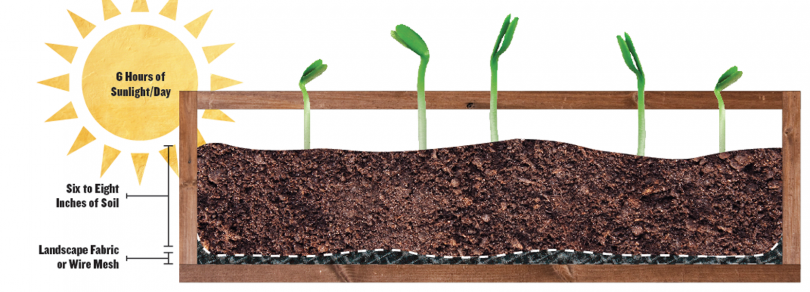Written by Sandra C. Liebler
“During World War II, for health and economic reasons, Americans were encouraged to establish what were called Victory Gardens to grow their own vegetables.
The public responded, and it was estimated that those little gardens produced a remarkable 30 to 40 percent of the country’s food supply during that period.
That was a long time ago, but the rationale for such gardens is timeless, and your backyard vegetable garden today can still contribute not only to your well-being but to the nation’s as well.”
—Raymond Nones, author of Raised Bed Vegetable Gardening Made Simple, The Three-Module Home Vegetable Garden
No matter what the impetus, small-scale gardening is on the rise. Our suburban small-yard lifestyle, our aging Boomer population, concerns about where and how our food is grown, a need to feel self-sufficient, economic concerns, or just plain love of the outdoors—spring brings out the would-be gardener in each of us.
To research this topic, I attended a class on Square Foot Gardening, taught by James City County Master Gardener Wayne Moyer and offered through the Williamsburg Area Learning Tree (W.A.L.T.). During this three-session course, Moyer taught the basics of starting and maintaining a raised-bed garden, using Mel Bartholomew’s All New Square Foot Gardening as the textbook.
As with most gardens, planning and preparation are paramount—starting with a raised bed, measuring 4 feet by 4 feet, with a soil depth of 6 to 8 inches. The garden will need at least six hours of sun a day, and should be located away from trees, shrubs or traffic areas. The sides can be anything as simple as four planks secured at the corners or as elegant as a carpenter-built box with decorative posts. Lining the bottom with landscape fabric or wire mesh deters voles, weeds and insects.The box is then filled with soil, leaving a few inches of space at the top. Author Mel Bartholomew, who first wrote his best-selling garden book, Square Foot Gardening, in 1972, and revised it in 2005, recommends using a soil blend of 1/3 compost, 1/3 vermiculite and 1/3 peat moss. He says that fertilizer is rarely needed with this rich medium, which he dubs “Mel’s Mix.”
The box is then divided into one-foot squares, and each square is planted with a chosen vegetable. Moyer says to grow what your family likes to eat and grow only as much as you need. (Anyone who has been blessed with the bounty of summer zucchini and had to appeal to friends and neighbors to share the wealth will appreciate this wisdom.)
Bartholomew’s book contains diagrams on how to plant the squares. Tomatoes, cucumbers or beans will need support, such as a trellis or system of poles and string, usually placed across the back of the box. Some suggested plantings are three tomatoes in a square, four cucumbers in another, nine spinach, four onions, four lettuces, etc. Flowers are compatible with herbs and vegetables in a garden and can make the garden very attractive as well as functional. Moyer says that with proper planning, this one bed can yield produce for three seasons, spring, summer and fall.
In early spring, seeds can be started in vermiculite or peat cubes, kept indoors in a warm place (Moyer places his on top of his hot water heater!) and repotted as they germinate. They are to be planted outdoors only after the danger of frost is past (around April 15 in the Tidewater area.) Another option is to buy bedding plants from a garden center and plant them directly in the garden after the frost danger is past.
The nature and contents of the garden are entirely up to the individual, but the square foot method works well for beginners or seasoned gardeners alike. Among the benefits are the manageability of a small area requiring less water, little or no fertilizer and fewer weeds or insects. The soil doesn’t have to be tilled, rocks and tree roots are not a factor, and a small space such as a patio can provide a “crop” of lettuce, tomatoes or herbs. For would-be gardeners who can’t easily kneel or even those in wheelchairs, the box can be constructed on a platform at table height and thus can be tended while seated or standing. Children can learn to garden if given a small bed to tend, starting with a few easy-to-grow plants.
Small-scale gardening can be a healthy hobby with tangible rewards. Moyer says gardening keeps you in touch with the cycles of nature, even noting “the pleasure of your hands in the warm soil and being outside listening to the birds.”

